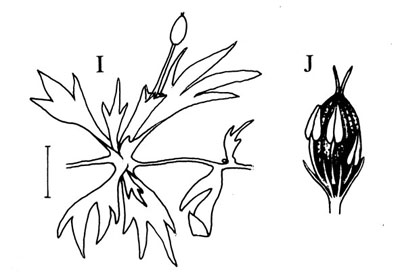12. Jenmaniella Engler
Jenmaniella Engler, Bot. Jahrb. Syst. 61. Beibl. 138: 7 (1927); van Royen, Med. Bot. Mus. Herb. Rijksuniv. Utrecht 107: 119--127, 137 (1951), rev.
Roots thread-like or flattened, branched; stems closely adhering to rock, prostrate, flattened, short, represented by a holdfast, usually in opposite or subopposite pairs, at more or less regular intervals along the root. Leaf bases often united below and forming a collar around each flower; leaf blades variable, usually a few times forked or pinnate with forked segments; ultimate segments linear, filiform to flattened, inrolled when young; sheaths simple or double, stipule-like on leaves subtending flowers. Spathellas club-shaped. Flowers solitary at end of root-borne stems; pedicels erect, up to 2.5 cm long; tepals 2--7, usually in an incomplete whorl, not all of them closely associated with base of stamens; stamens 1--7, free or sometimes 2 stamens united below, the number, shape and size of stamens often variable from flower to flower on the same plant; anthers dorsifixed, dehiscing introrsely in 4 spp., extrorsely in 2 spp.; pollen in monads. Capsules borne on an up to 3 mm long gynophore, ellipsoidal; valves equal, each with 3 or 5 ribs; stigmas simple, equal. Seven spp., northeastern South America, probably also Bolivia.

Jenmaniella tridactylifolia. I Fragment of creeping root with subopposite leafy shoots (5 mm). J Flower (0.5 mm).
Cook & Rutishauser 2007